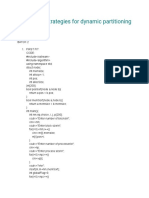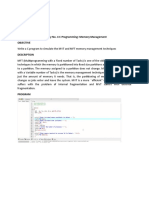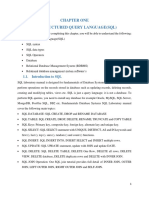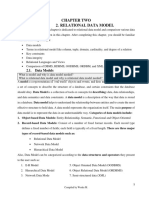0% found this document useful (0 votes)
311 views12 pagesWorst Fit Algorithm
1) Worst-fit memory allocation is a technique where processes are allocated to the largest free memory partition that is sufficient to hold them. This leads to large internal fragmentation but allows other smaller processes to potentially fit in the leftover space.
2) It is slow since it must traverse all memory partitions to find the largest free one for each process.
3) An example allocates processes of sizes 212, 417, 112, 426 to partitions of sizes 100, 500, 200, 300, 600 using a worst-fit algorithm, leaving the 426 process unallocated.
Uploaded by
Magarsa BedasaCopyright
© © All Rights Reserved
We take content rights seriously. If you suspect this is your content, claim it here.
Available Formats
Download as DOCX, PDF, TXT or read online on Scribd
0% found this document useful (0 votes)
311 views12 pagesWorst Fit Algorithm
1) Worst-fit memory allocation is a technique where processes are allocated to the largest free memory partition that is sufficient to hold them. This leads to large internal fragmentation but allows other smaller processes to potentially fit in the leftover space.
2) It is slow since it must traverse all memory partitions to find the largest free one for each process.
3) An example allocates processes of sizes 212, 417, 112, 426 to partitions of sizes 100, 500, 200, 300, 600 using a worst-fit algorithm, leaving the 426 process unallocated.
Uploaded by
Magarsa BedasaCopyright
© © All Rights Reserved
We take content rights seriously. If you suspect this is your content, claim it here.
Available Formats
Download as DOCX, PDF, TXT or read online on Scribd
/ 12











































































































